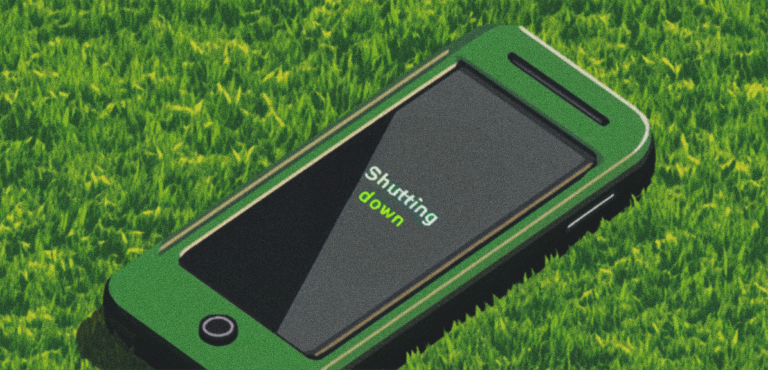
How (and Why) to Participate in a Digital Detox Challenge
Though technology offers numerous advantages, many individuals are considering doing a “digital detox,” or a vacation from it for a predetermined period, because they are concerned about how it affects their mental health. Is it only a passing trend or is it imperative to cut off from technology?
That’s a hard answer. Our daily lives depend on technology in some kind. Most of our social contacts are determined by social media channels. Cellphones let us stay in regular contact with friends and relatives. More and more professional jobs require tech. On the other hand, too much technology fuels depression, strained relationship, and physical issues.
Examining the benefits and drawbacks of cutting off technology, this article presents a fresh approach to this modern dilemma.
What are the benefits of a digital detox?
1. Gain more self-awareness
One of the strongest cases for a digital detox is the possibility of improved mental clarity. The results were published in the journal Environment and Behaviour, showing that people’s cognitive function and rumination were both improved when they went for walks in nature without technological gadgets. In this digital world of continual messages, emails, and scrolling, it’s easy to let our minds become overloaded. Too much screen time is associated with increased anxiety and stress for many people.
People can practise mindfulness by putting down their phones and laptops and engaging in activities like meditation, writing, or simply spending time in nature. If you stick to these habits, you’ll learn more about yourself, which will make you better capable of using technology effectively and creatively once you return to it.
2. Cultivate genuine relationships
Disconnecting from technology can help you concentrate on developing relationships in person when “likes” and comments are misinterpreted as actual dialogues. Social media can make adults feel lonely and isolated even if it could encourage communication. Adults who spent more time on social media also reported greater degrees of loneliness, according to a study in the American Journal of Preventive Medicine. Relationships suffer when one spends too much screen time and lacks face-to-face conversation. When people set down their phones and other technology gadgets, they are more likely to plan get-togethers, have meaningful conversations, and value time with loved ones. This change could enable individuals to have better, more meaningful experiences-based social contacts, therefore strengthening their connections and maybe boosting their sense of belonging.
3. Improve physical well-being
Spending too much time in front of screens affects people’s mental as well as their physical condition. Long-term use of electronic devices has been related to many health issues including obesity, poor posture, and sleep disruptions. Several studies have linked inactivity to these problems as well as muscular and joint strain. By allowing yourself to go for walks, exercise, or just appreciate nature free from interruption, taking a break from technology can be a terrific approach to concentrate on your physical health. Another advantage of reducing screen time is improved night’s sleep; this is so because blue light from displays disturbs our circadian rhythms. A vacation from electronic devices might help someone’s physical condition as well as their developing of positive habits.
Challenges of a digital detox challenge
A digital detox presents a wide range of difficulties. A major obstacle is Fear of Missing Out (FOMO) which can make people anxious about removing themselves from social gatherings, news, or business communications. The fact that many people have formed strong routines around technology only adds to this strain; it’s hard to resist the urge to check notifications and cruise through social media on autopilot. Furthermore, many people in today’s economy feel guilty about putting their personal well-being ahead of their professional responsibilities because they cannot afford to disconnect from technology because of workplace pressures. The path to a digital detox is complicated and difficult due to all these reasons.
How to finding balance for a healthy approach
A balanced approach to technology use is more appropriate than seeing a digital detox as an all-or-nothing concept. A few approaches to think about are these:
Scheduled breaks
Regular pauses throughout the day are preferable to long periods of total disconnection. You may establish a healthy boundary with technology by setting aside specified times to disengage, such before bed or during meals, while still allowing for necessary connectivity.
Digital minimalism
By carefully selecting one’s digital possessions, one can practise digital minimalism and put an emphasis on quality rather than quantity. Unfollowing irrelevant accounts, reducing app use, or establishing concrete objectives for digital participation are all examples of what may fall under this category. A more deliberate and less overwhelming online experience is possible when digital interactions are made simpler.
Engage in non-digital activities
A more gradual shift towards a less screen-dependent lifestyle can be facilitated by substituting non-digital pursuits for screen time. Taking part in community events, reading, or pursuing hobbies enables individuals to develop interests beyond the digital world, which enhances their life.
Stick to tech with built in digital detox strategies
Tech businesses have taken notice of the risks associated with excessive technology use and have launched programs to promote digital well-being. For instance, in 2018, Google debuted its Digital Wellbeing effort, which comprises tools that let users to monitor screen time, establish app usage limitations, and plan “Wind Down” intervals before to sleeping.
To encourage better tech habits, Apple also included tools in iOS to let users keep track of how much time they spend in front of the screen and set limits on specific apps. The necessity of digital detox practices is being more recognised by tech businesses, as seen by these initiatives.
Distilled
In the end, the question of whether breaking away from technology is really required has no one right answer. Though there are many convincing reasons to cut off from technology—better mental clarity, closer connections, and improved physical health—there are also many challenges to overcome like fear of missing out (FOMO), breaking habits, and job-related responsibilities.